Roaches eat just about anything. They’re so tenacious when hungry that many people wonder if they’ll eat paint. This may include paint that’s dripped onto the floor, the peeling paint on your walls, or even decorative paintings.
Roaches eat oil-based paint and emulsion paint. Ones that contain vegetable oils, animal fats, and starch will attract cockroaches. Roaches won’t be interested in eating chemical-based paints (such as the paints used on cars and home appliances) or vegan paints. Roaches can digest paint without harm, despite its toxicity, due to their adaptive genes. The latest scientific research has shown that roaches can be repelled by paints infused with essential oils.
Cockroaches aren’t actively attracted to paint as a food source. They will never choose to eat paint when carb-rich human food or waste is available. However, that doesn’t mean that roaches won’t consume paint in order to survive. It depends on how hungry they are and how much access they have to their preferred foods.
Are Cockroaches Attracted to Paint?
Paint is low on the list of food choices for roaches. If a small roach is competing for food with a large roach or if there’s nothing more suitable available, they may settle for eating paint.
Roaches are omnivorous, so they eat animal and plant-based substances. Household cockroaches favor decaying foods with animal fats, starch, and sugar, especially American cockroaches and German cockroaches.
Do Roaches Like Paint?
Cockroaches can eat paint because of the animal-based ingredients that are used to make it. Roaches prefer to eat the paint on a painting rather than the purely chemical-based paint on a bicycle, motorbike, or car.
Most paints are made with chemicals, but animal and food products are used to produce the binder. That’s how cockroaches gain nourishment from the consumption of paints.
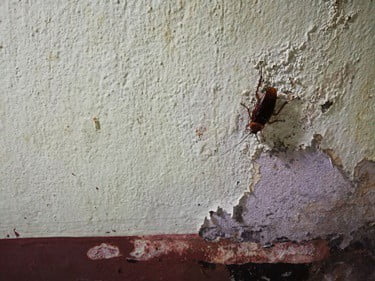
Why Roaches Eat Paint Binder
The binder is the component that holds the pigment together. Certain colors and tones are also achieved due to animal-based ingredients. The most common binder and pigment ingredients are:
- Ox gall
- Eggs
- Potato starch
- Snail glands
- Lice blood
- Honey
- Vegetable oil
- Milk
- Animal fats
Despite being mixed with chemicals, cockroaches can detect these nutritious ingredients in paint. They’re useful substitutes when roaches are low on food. The only kinds of paint that cockroaches actively dislike are those made without any animal-based products. These are known as vegan paints.
Cockroaches are most attracted to paints that contain animal fats, like oil-based paint. They are fond of substances that can be easily stored away as a source of energy. According to the Annual Review of Entomology, the way that roaches store body fat plays a significant part in their survival capabilities.
The body of a cockroach is a set of tissues composed of cells that serve multiple purposes in the cockroachs’ day-to-day life. Their bodies are designed to store nutrients as well as metabolize them.
Cockroaches can eat paint and utilize the nourishing substance within. Their bodies also store fat better than other substances, so when a cockroach consumes paint with animal fats, the fat storage lasts longer. This is a crucial element of survival if the cockroach won’t eat again for quite a while.
Is Paint Harmful for Cockroaches to Consume?
Eating paint does not harm cockroaches because they have a genome suited for consuming toxic material. According to North Carolina State University, roaches have the second-largest genome of any insect. A genome is the complete set of genetic information an organism can have. It contains all the information one needs to function.
Roaches have always loved decaying environments. Before humans became the dominant species, cockroaches would often consume plants that contained toxic substances. Constantly associating with these plants caused cockroaches to evolve their genes to the point where they could digest harmful matter.
Genes are hereditary, meaning that cockroaches that developed this ability in the past will hand it down to the cockroaches of today. Modern-day roaches consume just as many, if not more, toxic materials than their ancestors.
The human food they scavenge is often chemically altered and would be harmful to other animals. A cockroach’s metabolism knows how to process all the toxins in human foods so that it’s not harmful. So strong is the cockroach genome that even insecticides don’t outright kill these formidable pests.
Paint is nothing compared to insecticides. That’s why they have no problem using it as a food source, despite paint being a non-food substance. The kinds of paints cockroaches are commonly attracted to are:
- Oil
- Watercolor
- Tempera
- Acrylic
These are used in paintings and murals. Cockroaches are also attracted to emulsion paint, which is used for walls. The one type of paint they seem to like the least is enamel paint. This is an air-dry paint used for concrete, refrigerators, engines, and nails.
Does Paint Repel Cockroaches?
Paint doesn’t repel cockroaches. If the paint doesn’t contain any substance a cockroach can eat, they will ignore it. Some paints contain active cockroach-repellent ingredients like insecticide. These draw the cockroaches in for easy extermination. Most anti-cockroach paints have no fumigation effect, so it’s safe to paint in human environments. Those kinds of paints are used for areas that cockroaches usually inhabit, such as:
- Kitchen cabinets
- Basements
- Laundry rooms
- Bathrooms
- Ceilings
How Can I Use Paint to Repel Cockroaches?
Is vegan or insecticide-infused paint something you can’t find or don’t wish to use? Then there are many things you can mix with paint to repel cockroaches. Many herbs, oils, and spices are natural cockroach repellents. When mixed with paints, they will ensure that cockroaches have a harder time surviving in your household.
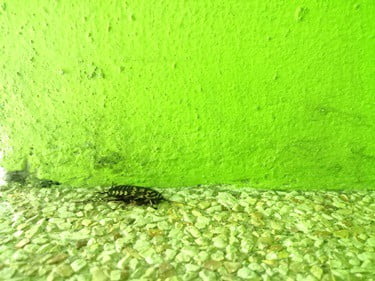
Essential Oils
- Tea tree oil
- Eucalyptus oil
- Lavender oil
- Cypress oil
- Peppermint oil
- Oregano oil
- Citronella oil
- Rosemary oil
- Cedar oil
- Catnip oil
- Lemongrass oil
- Yarrow oil
Herbs and Spices
- Catnip
- Peppermint
- Apple mint
- Bay leaves
- Ginger mint
- Calamint
- Basil mint
- Water mint
- Cinnamon
- Pennyroyal
- Pandan leaves
- Garlic (best for painting the exterior of the house)
Essential oils and natural remedies are often criticized for being associated with pseudo-sciences. However, the Tehran University of Medical Sciences published a study confirming the effectiveness of essential oils in repelling and even exterminating cockroaches.
The study used 5 types of essential oils: rosemary, oregano, yarrow, eucalyptus, and mint. Here is a table to give you an idea of how much of each essential oil to use in paint. This presents the effectiveness of each oil at different concentration levels:
| Essential Oil | Concentration | Repellency |
|---|---|---|
| Oregano | 30% 15% 10% 5% 2.5% | 96.5% 96.8% 96.03% 98.8% 99.1% |
| Eucalyptus | 30% 15% 10% 5% 2.5% | 27.7% 33.3% 43.2% 51.7% 49.8% |
| Mint | 30% 15% 10% 5% 2.5% | 63.3% 60.1% 59.01% 68.8% 63.3% |
| Yarrow | 30% 15% 10% 5% 2.5% | 86.7% 84.2% 83.3% 92.8% 79.3% |
| Rosemary | 30% 15% 10% 5% 2.5% | 86.2% 94.5% |
As seen by the table above, different concentration percentages affected the repellency of each oil.
Which Oils To Use?
Eucalyptus oil is the least effective. It is better to use a lower percentage of concentration when selected, as 5% was more effective than 30%.
Mint oil caused a 59.1 to 68.8% repellency, which means that the concentration level only affects the repellency by an insignificant amount.
Much like eucalyptus, yarrow oil showed the highest repellency effect when only 5% was used. That means only a little should be used when mixed with paint for the maximum amount of effectiveness.
Oregano oil varied between 96.03 and 99.1%, so the concentration levels matter little regarding its effectiveness. The study proved that oregano oil is the best essential oil to mix with paint if you want to ward off roaches.
While rosemary oil was only tested with 2 concentration levels, the study found that rosemary was the most toxic substance for cockroaches. It caused a 100% mortality rate in the cockroaches after only 24 hours of exposure.
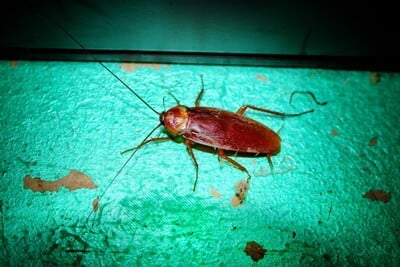
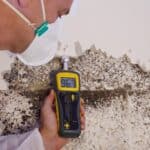
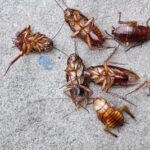
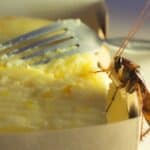
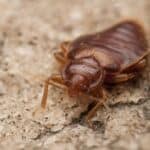
Amazing information!
I was dismayed to find my painting marred by what seemed to be bug damage, with the paint surface mysteriously scratched overnight. Recently saw some cockroaches in my studio, and I couldn’t help but suspect them, which is confirmed by your study. Now I will use the process to repel by using the recommended essential oils I have. Here’s hoping for a successful defense against further damage.”
Thanks, Jack.